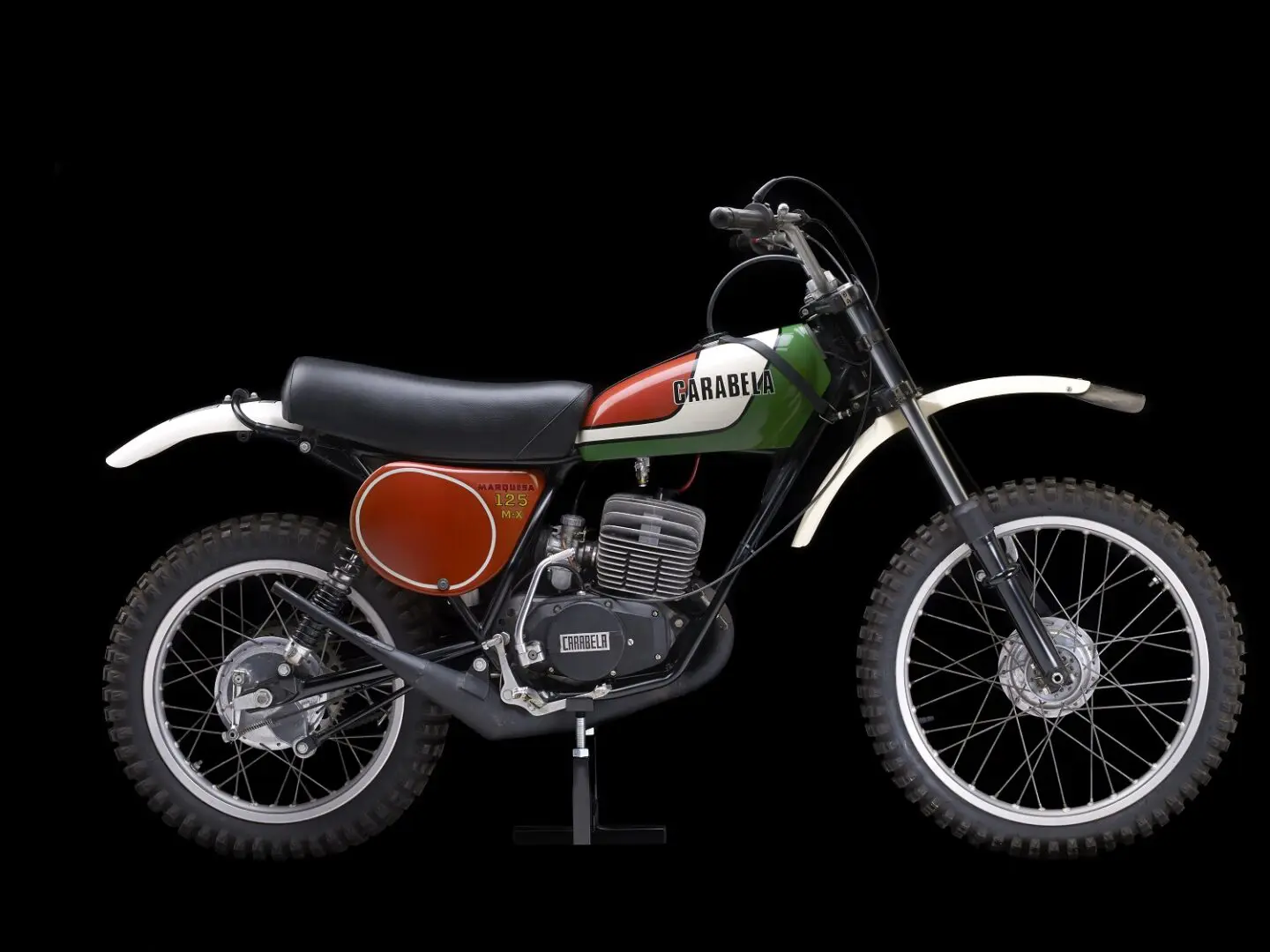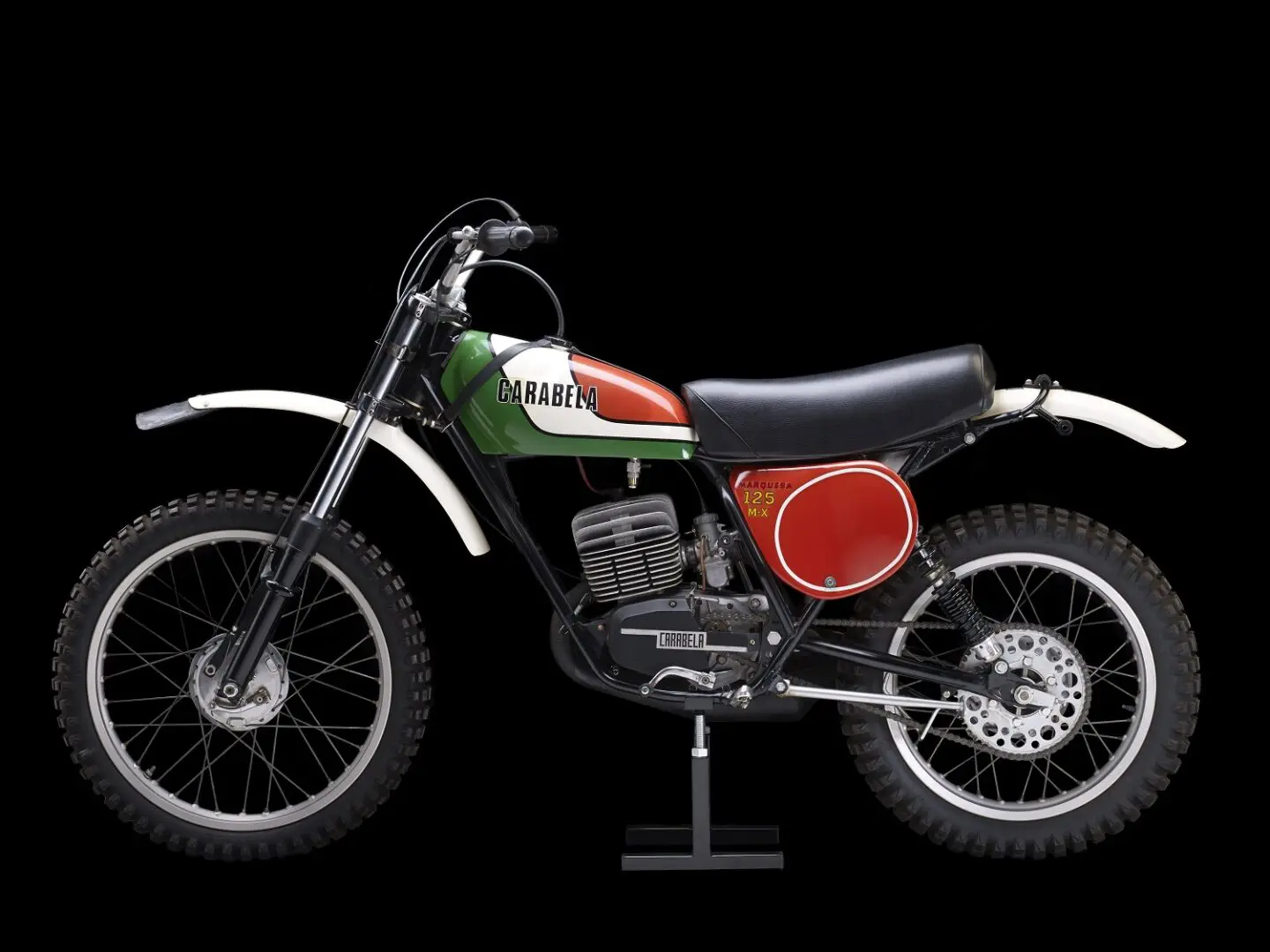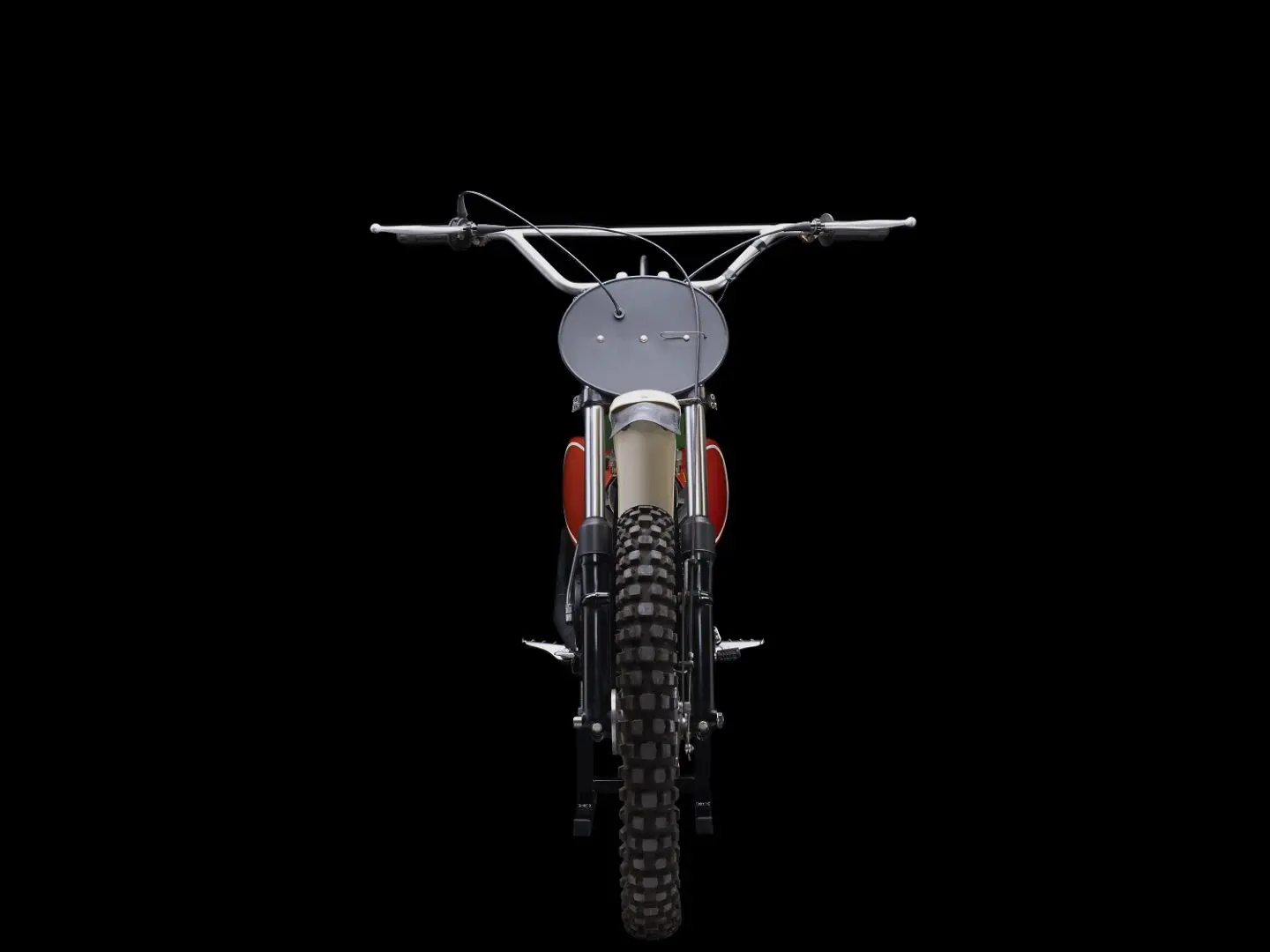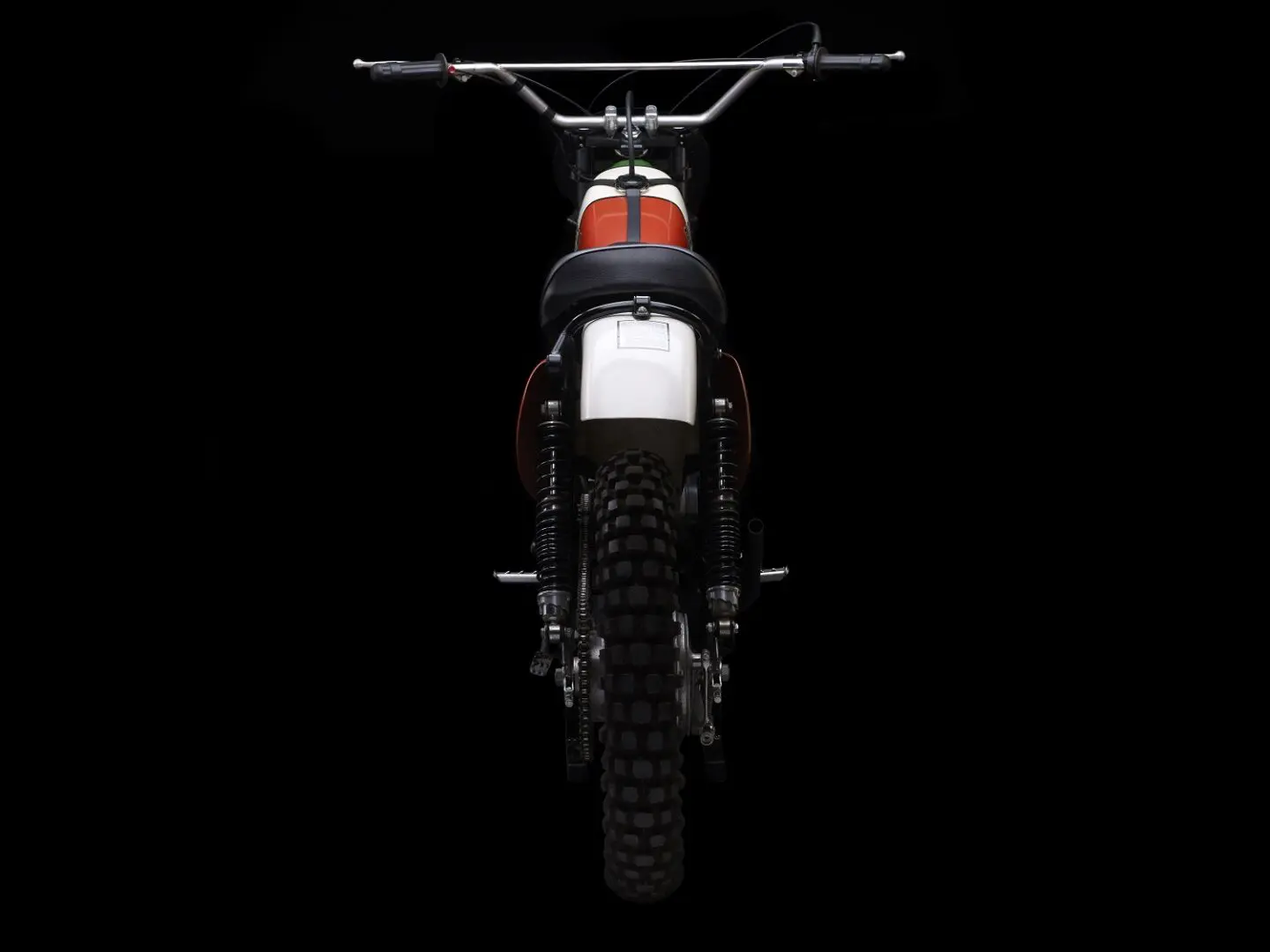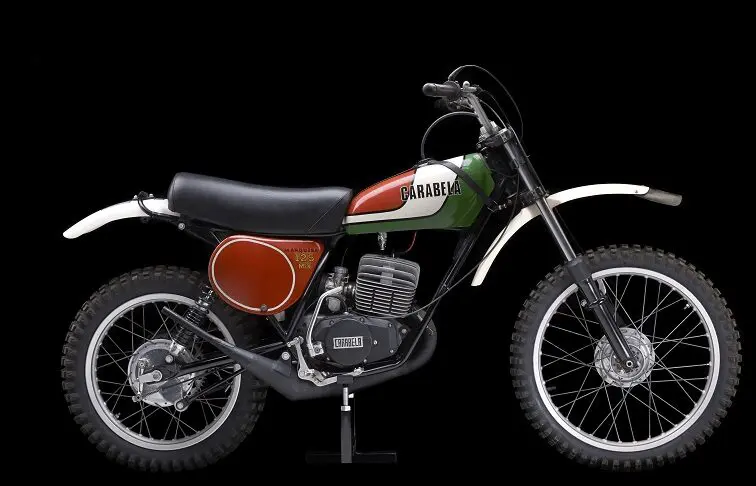1976 Carabela Marquesa 125 MX
Model Information
Model Info – 1976 Carabela 125 Marquesa MX
"There's more south of the border than tacos and dark eyed Senioritas" – Cycle Guide magazine
The first Mexican 125 motocross bike imported into the US was the Carabela Caliente in 1971, appropriately colored fire engine red. Carabela's parent company Acer-Mex had already been producing bicycles for 20 years, producing 300,000 per year by 1976. At their 550,000 sq. ft. facility in Mexico City, every part of the Caliente was designed and manufactured in-house with the exception of the Barum tires (Czech), Airtron air filter (US), and Del Orto carb (Italy). The engines were manufactured by Carabela in Mexico from blueprints licensed by Minarelli (Italy). I believe the same Minarelli engines were also used by Indians. As Cycle World stated, "Acer-Mex employs over 3000 workers, uses IBM computers to control parts inventories, and even manufactures its own steel tubing."
The original Caliente received great reviews; as Cycle World put it, "Mexico's first small bore motocross export is light, well-finished, and capable of winning." Cycle Guide said, "From south of the border, Mexico's first motocrosser with hot sauce in its veins." The forks which utilized external fork springs were off their street bike. However, they offered optional Ceriani units for an extra $80. They claimed a dry weight of 183 lbs. The suggested retail price is $695.
A redesign for the 1973-1974 model years featured an all-silver paint scheme with a red stripe on the tank, a better frame, a longer wheelbase, a radial finned engine, internally sprung forks, a Mikuni carb, electronic ignition, and a left-side shifter.
The reviews weren't good; the motor was slow, Betor forks were unsatisfactory, Boge shocks were miserable, brakes were bad, pegs were bad, the bars utilized a strange crossbar, and the u-shaped bar clamps (possibly copied from Bultaco) slipped. "It was fun to ride, but half of the ride would be spent searching for the parts that fell off." The suggested retail price is $800.
In 1975 Carabela introduced the next evolution of their motocross technology with an all-new bike name, the 125 Marquesa MX. The all-new look, as Popular Cycling stated, "bears a remarkable resemblance to an Elsinore." Unfortunately, it still utilized the 5-speed Minerelli engine, essentially the same engine since 1973. However, the reviews were much better; Popular Cycling stated that "during our testing of the Carabela, nothing fell off." At the time, this was considered an accomplishment.
Interestingly, it was during this Popular Cycling test that the infamous image of test rider Brad Zimmerman was photographed jumping the Marquesa 125. Although Carabela used this image in brochures, posters, and ads, they never knew who the rider was.
The engine may have been down on power, "the powerband is so narrow that you have to run the engine until you're sure it will blow up." However, the newly laid down rear shocks and longer travel forks were praised as "excellent," the brakes "flawless," and the dual fuel petcocks with in-line filters "first rate". Popular Cycling's conclusion: "a good selection for the beginner MXer." Retail price $800.
In 1976 the 125 Marquesa MX featured a newer 6-speed Minarelli engine with stronger gears, improved rod, different pistons and porting that claimed 24hp, a 32mm Mikuni carb, DID aluminum rims, fiberglass tank and side panels, plastic fenders and front number plate, a Motoplat ignition, and a new paint scheme. Similar to the 75' model, it still utilized the welded perches on the handlebars, strange OEM grips, and iconic rubber-strapped tank. I am not aware of any magazine tests on the 1976 Marquesa 125 MX. Claimed dry weight 186 lbs. The suggested retail price is $898.60.
New 1976 Carabela 125 Marquesa MX
Krause Racing, a famous Chicago area motocross shop in the '70s, specialized in foreign brands, including Carabela, but I can't recall seeing one in their showroom, which was always packed with new Maicos, CZs, and Huskys'.
This isn't too surprising considering that when I started racing in 1976, the Japanese brands were already dominating the starting lines around the country, and the competition amongst brands was overwhelming. It wasn't until I started collecting that I became enamored with the Carabela story and a desire to find one of these historic bikes. The sleek lines and overall design of the 1975 125 Marquesa MX made it one of my most sought-after bikes. Unfortunately, there were very, very few complete bikes to be found, and a satisfactory restoration was a long shot due to the scarcity of original parts.
There are a few nice examples of 1971-1974 125 Caliente's and 1975 125 Marquesa in various collections, but I had never even seen the 1976 125 Marquesa MX until Bill Morris listed this bike on eBay in March 2014. Long ago, Bill's father-in-law Dave Dilley convinced his father (who operated one of the first Texaco gas stations in the US in Kitts Hill, OH) to let him open a lawn mower sales/service shop across the street. At some point, Dave became a motorcycle enthusiast and began selling (and racing) Triumphs in the 1960s and Carabela's in the 1970s.
Fast forward to 1992 – one day, Bill was out cutting the grass when his father-in-law pulled into the driveway with this Marquesa 125 MX in the back of his pickup. When Dilley's shop closed in 1976, this brand new Carabela and another, exactly like it, were kept in a barn for the next 16 years until Dave decided to move. It was then that he chose to give these bikes to his grandsons, one being Bill's son, Tyler Morris.
Tyler was only 6 years old at the time, so the Carabela was put in the basement, where it remained until 2014, when Bill decided to sell it and surprise Tyler with the proceeds to help celebrate his wedding later in the year.
Since its arrival in the US in 1976, this Carabela 125 Marquesa MX has never had gas in it. Thanks to Dave Dilley and Bill & Tyler Morris, the rest of the world can now see what a new Carabela 125 Marquesa MX would have looked like in the showroom of the few remaining Carabela dealerships in 1976.
